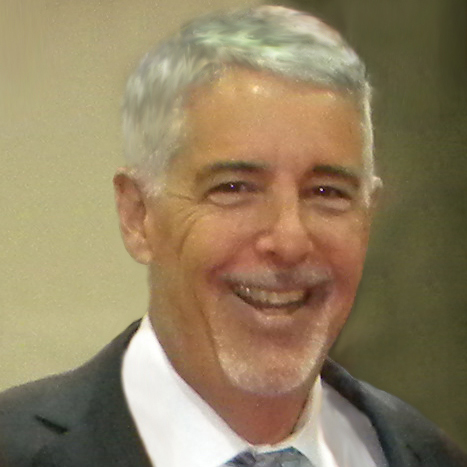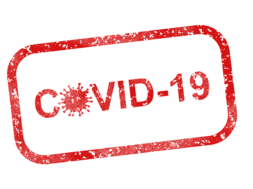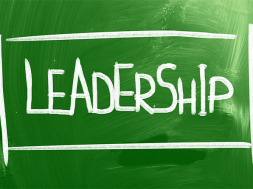
Leadership in the 21st Century: the Leadership Challenges
By Mitch Talenfeld, CEO, MDT Marketing
Introduction
This century, society has enjoyed technological advances of epic proportions, which have rocked the foundation of mankind. This explosion of technology has disrupted entire industries, bankrupted companies that seemed invincible and changed the world in ways that we could never have imagined. “The dawn of the planet of the smartphones came in January 2007, when Steve Jobs, Apple’s chief executive, in front of a rapt audience of Apple acolytes, brandished a slab of plastic, metal and silicon not much bigger that a Kit Kat. This will change everything, he promised. For once there was no hyperbole. Just eight years later, Apple’s iPhone exemplifies the early 21st century’s defining technology” (Anonymous, Planet of the Phones, 2015). Mobile technology put communication capabilities in the hands of people all over the globe. And the power of these hand-held computers has enabled individuals to change the world. In recent years, governments have been overthrown, individuals have created wealth, and people from the far-reaching corners of the earth have been exposed to information, new ideas and a plethora of modern day miracles that have changed their lives forever.
“Today about half the adult population owns a smartphone; by 2020, 80 percent will (Anonymous, Planet of the Phones, 2015). Technology has become the great equalizer. Even more amazing is the fact that technological developments are increasing at exponential rates, which will make the last 8 years of changes look slow in comparison and will transform society in ways that even the greatest minds of our times cannot envision.
This paper will examine the challenges leaders face in the 21st century, which are profoundly different than challenges leaders have confronted at any point in human history. It will delve into a new paradigm of organizational thinking and leadership that will enable organizations to react, adapt and to thrive.
Leadership defined
“Leadership is an influence relationship among leaders and followers who intend real changes and outcomes that reflect their shared purposes” (Daft, 2015, p. 8). Leadership involves influence, change, shared purpose, intentions, followers, and personal responsibility and integrity (Daft, 2015, p. 5).
Managers today must also be leaders
Managers are responsible for the output of their followers. To accomplish the ‘what and by when’, managers must provide team members with the wherewithal and resources necessary to satisfactorily accomplish their jobs.
According to Tom Foster, “Hierarchy has nothing to do with reporting to each other. It has everything to do with creating a value stream, where managers bring value to problem-solving and decision-making of their teams” (Foster, 2015, p. 92).
Managers’ success depends on their capacity to lead, support, and provide resources so subordinates are able to accomplish their goals.
According to Daft, “management can be defined as the attainment of organizational goals in an effective and efficient manner through planning, organizing, staffing, direction, and controlling organizational resources. So what distinguishes the process of leadership from that of management? Managers and leaders are not inherently different types of people. There are managers at all hierarchical levels who are also good leaders, and many people can develop the qualities needed for effective leadership and management” (Daft, 2015, p. 13).
A CEO’s role is to establish and communicate a vision, a corporate mission and the values that need to be ingrained within every aspect of their organization. Command and control organizations can no longer survive in a service-oriented, fast-paced world where decisions must be made at almost every level of an organization. Today’s new kind of corporate structure makes people more central to the success of an organization and requires most managers to also be leaders, embracing the CEO’s messages, vision and corporate culture, ensuring that these important communications move down the value-chain and are echoed in every level of organization. All of this takes strong leadership, great decision-making and excellent teamwork at every level.
Elliott Jaques’ theory of organizational structure and leadership
“Well organized and effectively led managerial hierarchies can contribute to an economically secure harmony and to a life of fulfillment for all employees through the opportunity to use their full capabilities for the good of themselves and their families, for the good their organizations and the people they serve, and for the good of society at large. Employment organizations have the potential to become great and satisfying places in which to work together in mutual trust and collaboration, and pervaded withal by a strong sense of fairness and justice. A significant contribution to the realization of this potential good lies in the hands of CEOs (Jaques, 2002, p. 7).
Jaques’ book, “Social Power and the CEO”, explains the theory of ‘time-span’, its importance and impact on organizations – and the role leaders have in creating entities that empower managers and followers to be happy and excel. Jaques considered the concept of time-span to be the “biggest finding of his life” (Jaques, 2002, p. 54). He believed that by understanding the length of time forward in which a person would feel comfortable and be competent “planning and executing an assignment or get to a goal”, leaders could organize their workforces and create successful, fulfilling workplaces where both the organization and individuals thrived.
“The discovery of time-span measurement of level of work in a role led to the discovery of a person’s time-horizon as the measure of that person’s potential capability” (Jaques, 2002, p. 57). Jaques theorized that people’s time-horizons could be broken down into very distinct stratum levels.
- Stratum One – Time span up to 3 months – restaurant servers, laborers, receptionists, store clerks, etc.
- Stratum Two – Time span between 3 months to 1 year – Assembly line supervisors, unit managers in fast food restaurants, advertising agency account managers, service managers at auto dealerships, etc.
- Stratum Three – Time span between one year to 2 years – Housing development managers, regional sales managers, production managers, etc.
- Stratum Four – Time span between 2 years to 5 years – Information systems managers, small business owners, corporate vice presidents, etc.
- Stratum Five – Time span between 5 years to 10 years – CEOs, Business unit heads, large developers, etc.
- Stratum Six – Time span between 10 years to 20 years – Major corporation CEOs, large city managers, etc.
- Stratum Seven – Time span beyond 20 years – The President of the United States, Secretaries of U.S. Cabinets and CEOs of Think Tanks focused on items such as global warming, energy, etc.
The concept of time-span explains why some followers in an organization feel comfort working under a more “directive leadership” (Daft, 2015, p. 78), particularly those in the lower stratum 1 level roles and why other workers would like responsibility and the freedom to make decisions. Time-span explains the people structure that is necessary to accomplish what Tom Foster calls a “value chain” (Foster, 2015, p. 92).
Jaques believed that to be effective, management and authority to control should be spread out to different levels of the hierarchy. And subordinates, depending on their roles in the organization, need to be empowered to make decisions within specific parameters based on their time-horizons, having the right amount decision-making authority to make them happy and effective.
Jaques also emphasized that putting people in the wrong role would be a managerial mistake, which would lead to major frustrations and many poor decision-making throughout the entire organization.
Organizational structures, technology and leadership
Organizations of today are often virtual, more horizontal in nature and very different from traditional organizations of the last century. Technology of all kinds, aided by information systems, automated processes, and procedures control today’s work-flow, and have enabled companies to communicate more effectively, and efficiently than ever before. More can be accomplished with less people, virtually wiping out business models of the past. This requires people to be more technologically savvy, continually having updating their skill-sets, which includes the soft-skills necessary for managers to be great leaders. Today’s new horizontal organizational structures make Jaques’ time-span theory of hierarchy more important than ever before.
Emotional intelligence and leadership
Relationship building, effective communications, critical thinking and solid decision-making are at the core of being an effective leader, all requiring a high level of emotional intelligence. “Emotional intelligence refers to a person’s abilities to perceive, identify, understand and successfully manage emotions in self and others” (Daft, 2015, p. 146). If leaders do not understand their own emotions, they will have a difficult time understanding how their emotions are impacting others and how best to manage their relationships. Components of Emotional Intelligence include self-awareness, self-management, social awareness and relationship management. Going back to the definition of leadership, it would be difficult to effectively influence relationships, and sway people for the betterment of a shared purpose without possessing a high level of emotional intelligence.
Knowledge breeds success
The pace of change and the growth in technology has created a need for organizations of all sizes, and their leaders, to continually keep up with the marketplace. Understanding what is new and changing – and how information in the palms of people’s hands – is affecting every business in monumental ways and will be key to organizational success in the future.
For example, one industry that has dramatically changed over the last several years is advertising. Every advertising and marketing agency – every newspaper, every television station, and every company involved in advertising in America has faced unprecedented, historical changes. People in these organizations who did not keep up with technology and continually update their capabilities no longer work in this field. It takes continual renewing of certifications, a daily readings of the latest marketing blogs, attending industry classes, seminars and conferences – in short, it takes a lot of effort to stay competitive.
It is clear that leaders from across organizations must stay current, and make sure their people stay current if they have any hope of surviving and thriving.
President Bill Clinton, in a Career College presentation in 2010, proclaimed that people must become “life-long learners” for them to succeed.
Culture eats strategy for breakfast
In today’s fast-moving world of instant information and continuous change, corporate culture is more important than ever before.
One of the most important and powerful influences leaders can have in a corporation is the effort put forth to build and support the organization’s culture.
“Culture can be defined as the set of key values, assumptions, understandings, and norms that is shared by members of an organization and taught to new members as correct” (Daft, 2015, p. 429).
And when decisions need to be made in any part of an organization, particularly at a time of crisis, an organization’s corporate culture and value-system can make or break the company.
Below is an excerpt from Tom Foster’s leadership novel that describes a meeting that the CEO, Catherine Nibale had with top management discussing a crisis that was about to unfold.
“Everybody listen up,” Catherine said. “Right now, things look messy and it appears that our internal morale is on the ropes. I don’t believe it for a minute. Something is going on here, but it’s not coming from inside this company. If there is anything I trust, it’s our people. We are not going to win this skirmish with a politically correct press release. We are not going to win by spinning this story. We are going to win with our people. We are going to win with our culture. Someone is running a strategy against us and I want them to know that culture eats strategy for breakfast.” (Foster, 2015, p. 152).
This excerpt brilliantly points out the critical role today’s leaders have in weaving the corporate values and culture into everything the organization does, and instilling those values in the people the organization hires and the way it does its business.
Conclusion
It is clear that technology is moving fast and entire industries and business models are dissolving, making room for organizations that are giving customers exactly what they want, and when they want it for less money than ever before.
Leaders, not just CEOs, but leaders scattered throughout organizations must work very hard at building strong relationships with followers – driving towards a common cause in an ethical manner. It is also clear that organizations must be strategically structured based on the work, the output and the time-horizon levels required, so people can do their jobs effectively in an environment that is both fulfilling and rewarding.
Today’s leaders must create a corporate culture that is forward-thinking – encouraging their followers to constantly learn, and stay abreast of the changing times. This is a 21st century leadership imperative. An empowered team with tremendous group knowledge will drive organizations towards prosperous futures.
References
Anonymous. (n.d.). Definition: Hierarchy. Retrieved March 16, 2015, from www.businessdictionary.com/hierarchy.html
Anonymous. (n.d.). Google Algorithm Change History. Retrieved March 17, 2015, from http://moz.com/google-algorithm-change
Anonymous. (2015, February 28th). Planet of the Phones. The Economist , p. 9.
Daft, R. L. (2015). The Leadership Experience (Sixth ed.). Stanford, CT, USA: Cengage Learning.
Foster, T. (2015). Outbound Air: Levels of Work in Organizational Structure. Foster Learning Corporation.
Jaques, E. (2002). Social Power and the CEO: Leadership and Trust in a Sustainable Free Enterprise System. Westport, CT, United States: Quorum Books.
Lombardi, V. (n.d.). Vince Lombardi Quotes. Brainy Quote . Retrieved March 17, 2015, from http://www.brainyquote.com/quotes/quotes/v/vincelomba380768.html

Mitch Talenfeld is CEO of MDT Marketing. Established in 1995, MDT Marketing is a cutting-edge digital marketing agency that does business with schools, colleges and universities from across the United States. Mitch takes tremendous pride in the work he and his organization does to promote and improve Private Sector Education institutions and the students they serve.
In addition to his position at MDT Marketing, Mitch is on the Board of Directors of the Florida Association of Postsecondary Schools and Colleges (FAPSC) and the Board of Directors of Keiser University’s Center for Career Education and Leadership (KUCCEL). Mitch has previously served as the Co-Chairperson of The Association of Private Sector Colleges and Universities (APSCU) Student Recruitment Task Force and Co-chairperson of APSCU’s Task Force on Recruitment and Admissions—the committee responsible for developing APSCU’s October 2013 document, Recommendations for Best Practices in Recruitment and Admissions.
For his efforts and devotion to the sector, Mitch was recognized as the APSCU Outstanding Allied Member of the Year in 2011 and as the FAPSC Associate Member of the Year in 2014.
Contact Information: Mitch Talenfeld // CEO // MDT Marketing // 805 E. Broward Blvd., Suite 301 Fort Lauderdale, FL 33301 // Phone: 954-764-2630 // mdtmarketing.com // mitch@mdtmarketing.com









